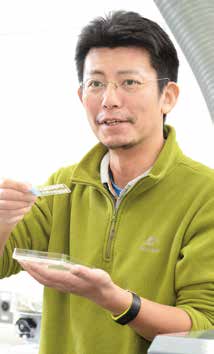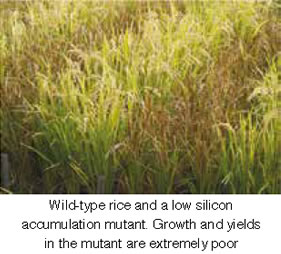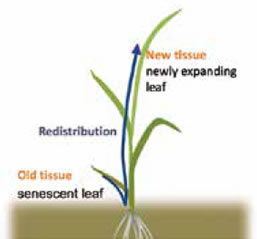Research Area : Plant Stress Responses
Molecular mechanisms of aluminum tolerance in plants
Aluminum (Al) toxicity is a major factor limiting crop production on acid soils. However, some plant species or accessions have evolved strategies to cope with Al. Rice is the most Al-tolerant species among small grain cereal crops. We identified a transcription factor for Al tolerance (ART1) and found that it regulates at least 32 genes implicated in Al tolerance. On the other hand, barley is the most sensitive cereal to Al toxicity, but there is a large genotypic difference in Al tolerance. We identified a major Al-tolerance gene in barley, HvAACT1. Furthermore, we found that high expression of this gene is acquired by a transposon insertion in its promoter.
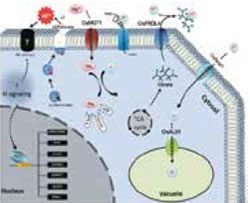
Transport system of mineral elements in plants
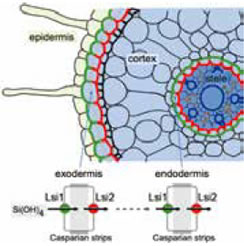
Mineral elements including essential, beneficial and toxic elements in soil affect both plant growth and human health. We are working on identification of transporters involved in uptake, root-to-shoot translocation and distribution/redistribution of these elements in plants. We have identified a number of transporters for Si, P, Mg, Mn, Zn, Cu, Fe, B, Cd and As. Especially, we found that rice has developed an efficient uptake system for mineral elements, which is mediated by both influx and efflux transporters polarily localized at the exodermis and endodermis of the roots. We also identified several transporter genes for accumulation of Cd and As in rice.
Mineral nutrients required for plant growth and development are taken up by the roots from soil solution, and then delivered to different organs and tissues depending on their requirements. In Poaceae, this selective distribution is mainly mediated in the nodes, which have highly developed and fully organized vascular systems. We found that “Inter-vascular transfer” of mineral elements from enlarged vascular bundles to diffuse vascular bundles is required for their preferential distribution to developing tissues and reproductive organs.
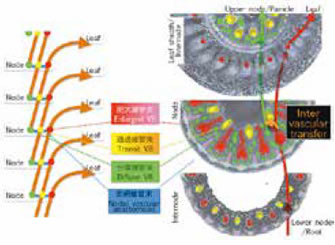
Studies on mineral distribution control systems in plants
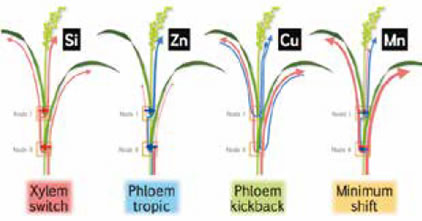
A number of transporters involved in this inter-vascular transfer processes have been identified mainly in rice. They are localized at the different cell layers and form an efficient machinery in the node. These findings will be applicable to improve productivity, nutritional value and safety of cereal crops.
Representative references
Yamaji N. et al. Reducing phosphorus accumulation in rice grains with an impaired transporter in the node. Nature 541:92-95. (2017)
Yamaji N. and Ma J.F. Node-controlled allocation of mineral elements in Poaceae. Current opinion in plant biology 39:18-24. (2017)



